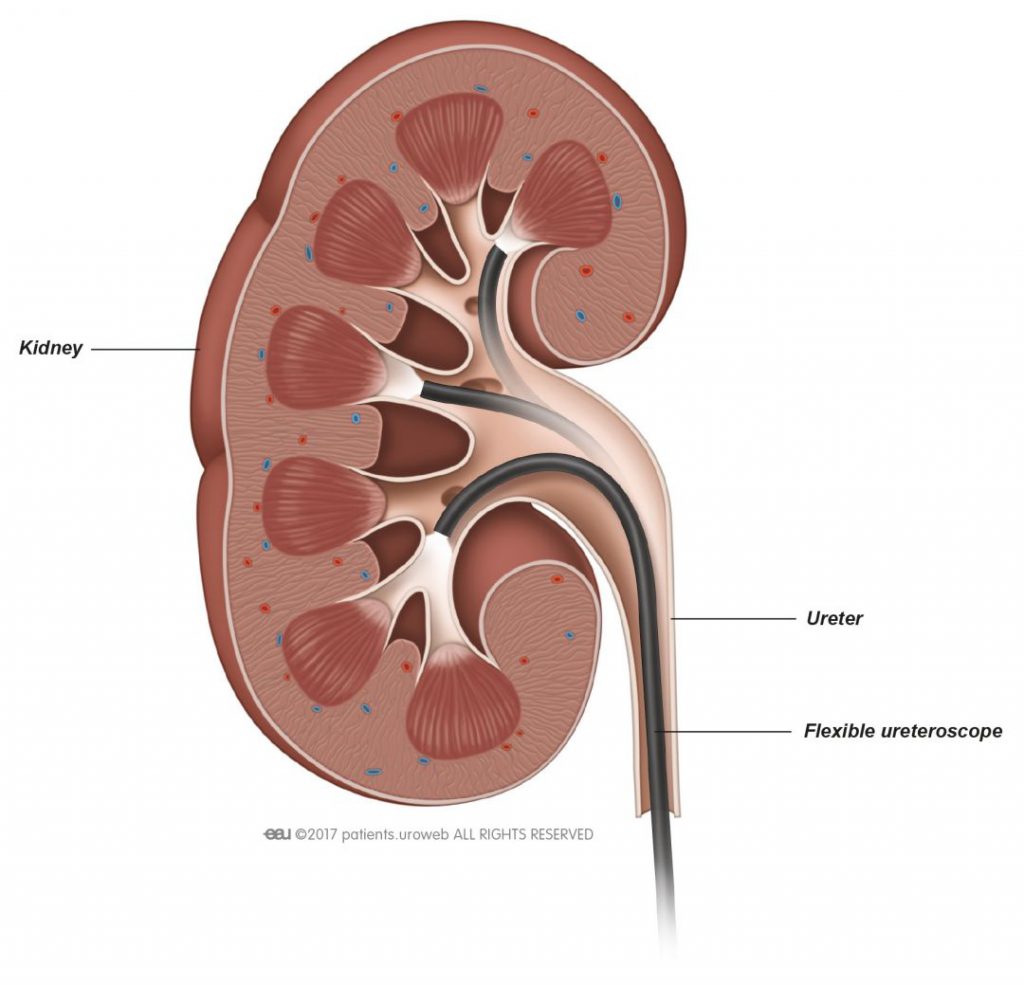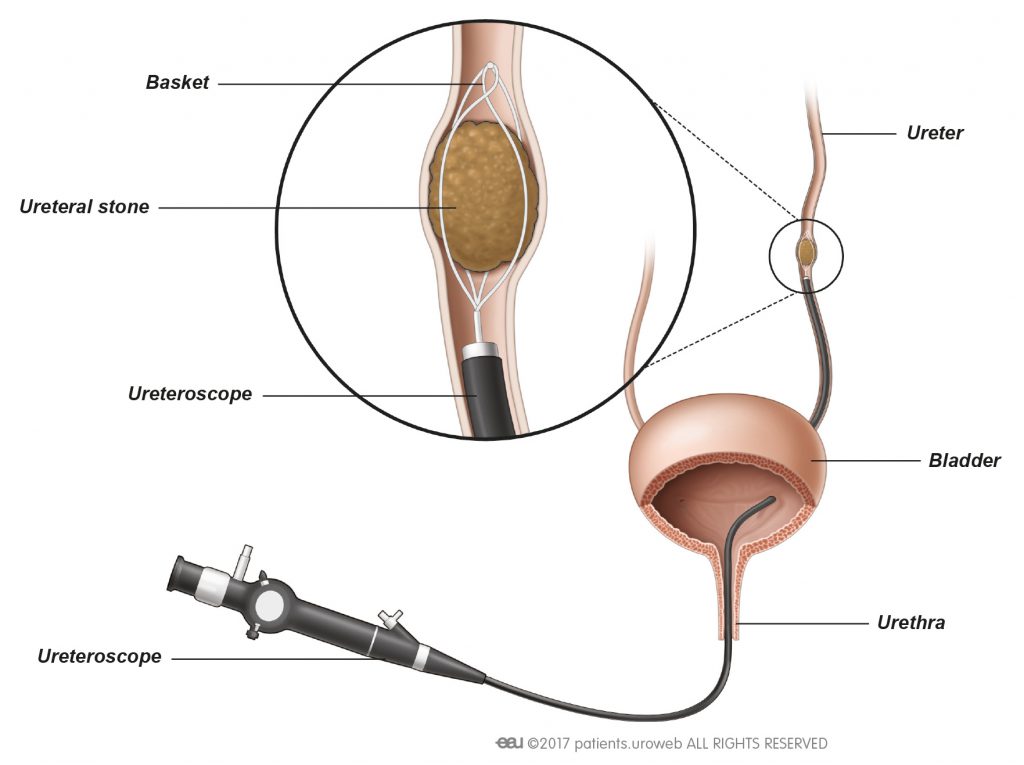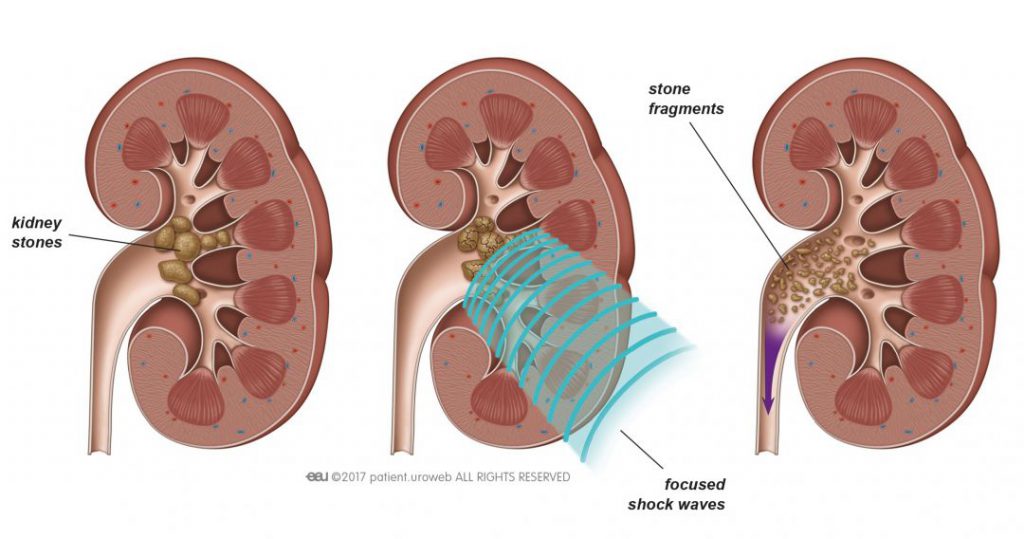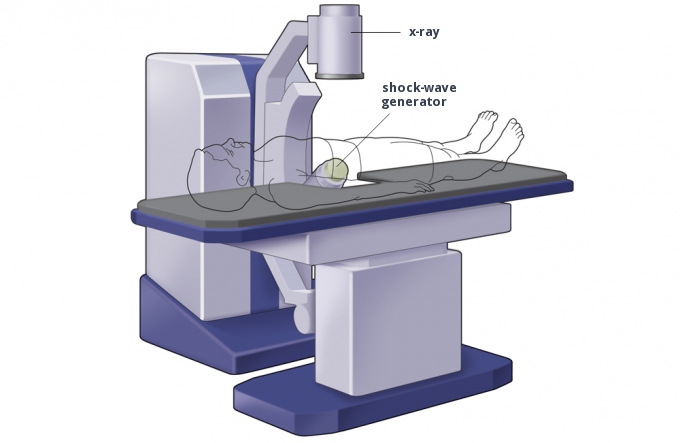Ureteroscopy
This procedure is used to treat small to medium-sized stones that are in the kidneys and the ureters.
A ureteroscopy doesn’t involve making any cuts in your skin as the surgical tools are passed through your urethra (the tube which urine passes through) and into your internal urinary system. The procedure is carried out either while you are asleep under a general anaesthetic or while you are awake under spinal anaesthesia which numbs you from the waist down so that you do not feel anything.
The doctor uses a thin, flexible tube (called a ‘scope’) that is inserted through your urethra, bladder, and then the ureter and into your kidney. The thin tube has a tiny camera on the end which the doctor uses to find the stones. Surgical tools are then passed down the tube so that the doctor can remove any small stones.
If there are any larger kidney stones, the doctor will pass a laser through the scope to break the stones up into smaller pieces which they can then remove, or leave in place, to be passed out when you urinate.
After the procedure there may be a need to place a stent (a small plastic or silicone tube to help keep the ureter open so that urine can flow out) in the urinary system. This would only be temporary and would be removed by your doctor a couple of weeks after the procedure.
This animation shows what happens when you undergo a ureteroscopy.


Shock-wave lithotripsy (SWL)
This procedure involves using sound waves from outside the body to blast the kidney stone into tiny pieces which can then be passed yourself when you urinate.
The procedure takes about an hour to do and is moderately painful, so you will be given pain medication. You may have it done under sedation, where you would be given medication to relax you, so you have limited awareness and recollection of the procedure. If you have a large stone, you may need several sessions to completely break it up.
Shock-wave lithotripsy is not recommended if you:
- Are pregnant
- Have a high risk of severe bleeding
- Have any uncontrolled infections
- Have uncontrolled high blood pressure
- Have a high body mass index which means that it would be difficult for the sound waves to reach the stone
- Have an aneurysm
- Have an anatomical obstruction in the urinary tract, below the stone, or in the bladder
- Have a very hard kidney stone (for instance, cystine stones).
Your doctor will advise whether this type of procedure would be suitable for you and will discuss the risks and benefits of shock-wave lithotripsy in relation to your individual medical circumstances.
This animation shows what happens when you undergo shock-wave lithotripsy.



